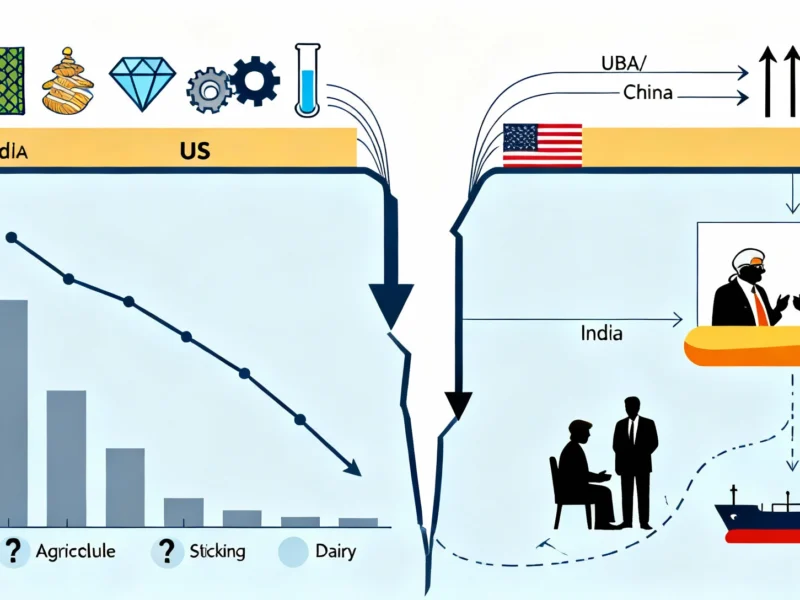Significant Export Decline Following Tariff Implementation
India’s exports to the United States have experienced a dramatic 37.5% decline, dropping from $8.8 billion in May to $5.5 billion in September, according to reports from trade analysts. This marks the fourth consecutive month of declining shipments as new tariff measures imposed by the Trump administration continue to impact bilateral trade relations between the two nations.
Labor-Intensive Sectors Bear the Brunt
The Global Trade Research Initiative (GTRI) analysis indicates that labor-heavy sectors have suffered the most significant impacts from the tariff measures. Sources suggest that textile manufacturers, gems and jewellery exporters, and chemical producers have experienced the heaviest losses. Additionally, engineering goods manufacturers have reported substantial declines in their US shipments, according to industry reports.
Trade Deficit Widens to 13-Month High
The sharp reduction in exports has reportedly contributed to India’s trade deficit widening to $32.15 billion in September, representing a 13-month high. Analysts suggest that while some export losses were offset by improved trade with countries like the UAE and China, the overall impact on India’s economic indicators has been substantial.
Ongoing Trade Negotiations and Sticking Points
Trade negotiations between India and the United States resumed last month after several months of stalled discussions, with reports indicating that an Indian delegation is currently engaged in talks in the US. According to sources familiar with the negotiations, both countries aim to conclude an agreement by next month, though significant hurdles remain.
Analysts suggest that agricultural and dairy market access continues to represent major sticking points in the discussions. The United States has reportedly pushed for greater access to India’s farm sector for years, viewing it as a substantial untapped market. However, Indian officials have consistently protected these sectors, citing food security concerns and the livelihoods of millions of small farmers.
Energy Cooperation and Geopolitical Considerations
Recent developments indicate potential shifts in energy cooperation between the nations. Reports state that President Trump claimed Indian Prime Minister Narendra Modi has agreed to stop purchasing Russian oil as part of broader efforts to increase economic pressure on the Kremlin amid the ongoing conflict in Ukraine. A spokesperson for the Indian foreign ministry confirmed that discussions were “ongoing” and that the US administration had “shown interest in deepening energy cooperation with India.”
Broader Trade Context and Future Targets
Until recently, the United States served as India’s largest trading partner, with bilateral trade reportedly reaching $190 billion in 2024. According to official statements, both leaders have set an ambitious target to more than double this figure to $500 billion, though current trade tensions present significant challenges to achieving this goal.
The tariff situation between India and the United States comes amid other significant global trade developments, including South Korea’s regulatory decisions regarding major tech companies, IMF warnings about US debt levels, and border disruptions affecting China-Russia trade routes. Meanwhile, technology industry standards continue to evolve independently of these geopolitical trade discussions.
Trade analysts suggest that the outcome of the current India-US negotiations could have significant implications for global trade patterns, particularly as both nations navigate complex economic relationships with other major powers while addressing domestic economic priorities.
This article aggregates information from publicly available sources. All trademarks and copyrights belong to their respective owners.



